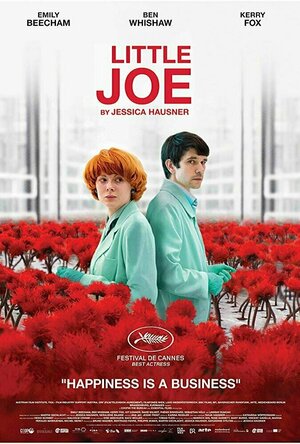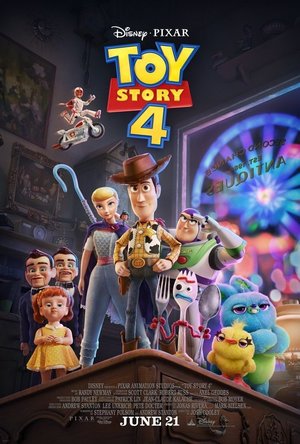
The Master Key System by Charles Haanel Audiobook Meditation Program: A Better Personality, Power to Achieve, Personal Purpose, Derived From -The Secret, From Mind Cures.
Book and Business
App
**Bonus FREE Master Key System eBook with this app** **24-Audios for over 6 hours of listening!** ...

5K Runmeter Run Walk Training
Health & Fitness and Lifestyle
App
Train to run your very first 5K race, and then continue with the award-winning Runmeter GPS...

Runmeter Running & Cycling GPS
Health & Fitness and Sports
App
Runmeter is the most advanced application for runners ever designed for a mobile device. Built from...

Aqua Map South Africa HD Pro - GPS Nautical Charts
Navigation and Travel
App
*** New exclusive function: mapXpan *** An app to satisfy all your Fishing and Boating's needs,...

Aqua Map Americas - Marine GPS
Navigation and Travel
App
An app to satisfy all your Fishing and Boating's needs, developed with the help of professional...

Aqua Map: Emirates - GPS Nautical Charts | HD
Navigation and Travel
App
An app to satisfy all your Fishing and Boating's needs, developed with the help of professional...
Lee (2222 KP) rated Rampage (2018) in Movies
Apr 13, 2018
Rampage the movie begins out in space, where genetic editing experiments too dangerous/illegal are taking place onboard a space station. Things have gone badly wrong though and canisters containing an experimental genetic pathogen begin hurtling towards North America in what looks like a meteor shower. Back down on Earth we're introduced to Davis Okoye (Dwayne Johnson) - San Diego zoologist, ex-military (so, comfortable with guns, flying helicopters etc, could come in handy later...) and general all-round cool guy. In his care is an albino gorilla called George, who was rescued from poachers as a baby by Davis. They've built up a special bond ever since, communicating in sign language to the level where they are able to joke and generally take the piss out of each other. Overnight, one of the space canisters lands in the zoo and is released into the face of an inquisitive (or Curious?) George. From there he begins to grow bigger, and become increasingly violent.
Elsewhere, two other canisters have landed out in the wild. One right by a pack of wolves and another hitting a lake. The brother and sister team heading up Energyne, the company responsible for the space station and the genetic work (Malin Åkerman and Jake Lacy), dispatch a bunch of clean up guys with big guns to try and apprehend the wolf, which ends up going badly. Meanwhile, an ex employee of Energyne, Dr Kate Caldwell (Naomie Harris), who is also responsible for creating the pathogen, heads to the zoo. She wants to make amends for everything and bring down the company that fired her. Government agent Harvey Russell (Jeffrey Dean Morgan) also shows up at the zoo with a bunch of men of his own, looking to take George away by plane - something else which you just know is going to end badly. Morgan plays Harvey Russell as basically just a slightly toned down version of his Walking Dead character, Negan. Grinning cockily throughout the whole movie and when he first squares up to Davis, you fully expect him to start swaggering around, monologuing about swinging dicks or something. He tells Davis that "when science shits the bed, I'm the guy they call to change the sheets"!
The three monsters begin making their way to Chicago to start smashing stuff up, attracted by a beacon emitting a sound only they can hear. Something "the tech guys rustled up overnight" at Energyne. Davis and Dr Caldwell also head to Chicago to try and help George and end the destruction, eventually aided by Harvey Russell.
Rampage has the potential to be a trainwreck, another casualty in the long line of awful video game movies, especially when there are so many CGI-heavy monster-city-smash movies out there these days. It all works surprisingly well though. When the monsters begin trashing things, it's not an over the top assault on the senses where you can't even make out any sign of human life and the affect that all of this is having on them. The action is well done and enjoyable, and peppered with plenty of trademark Dwayne Johnson humour too. Outside of the action, it's also Johnson that holds the rest of the movie together and prevents it from dipping below average. Dr Caldwell is a very underused and forgettable character, serving only as sidekick to The Rock. Everyone else, aside from Harvey Russell, is also pretty forgettable too. But then at the end of the day, this is all about George and his monster buddies, and overall I found this to be a very enjoyable movie.
Becca Major (96 KP) rated Love O2O in TV
Jan 21, 2019
The story follows university students Bei Weiwei and Xiao Nai, who are computer technology majors at Qing University and both have a passion for game design. One day Weiwei has to log into her preferred MMORPG from a public computer and is spotted by Nai. He later finds her in-game and they begin a relationship between their characters. It isn’t long before Weiwei and Nai begin to develop real feelings, and Nai goes out of his way to pass by Weiwei in real life. Their eventual official IRL meeting is sufficiently exciting.
The best part is that Xiao Nai, while ruffling a few of my feathers for his more stalker-y actions, is not an asshole! He is nice to Weiwei from the start and is a devoted and engaged boyfriend. Weiwei herself is smart and sassy, though aloof online. One of my favorite scenes involves her putting her ex-in-game-husband in his place once they meet IRL. It also doesn’t help that these two are practically the perfect couple.
All of the characters, in fact, are fairly interesting. Both sets of roommates have different but very dynamic relationships with each other; it feels very organic. My personal favorites were K.O, Hao Mei, and Weiwei’s roommate Erxi. Though my attachments may be because they are the central characters to my favorite side-plots. If there was a character I had to choose to dislike, it would probably be Nana, the character who does the most bad in the plot but doesn’t suffer any real consequences for her actions.
I don’t want to spoil the ending for you, but most of my criticisms concern how the story wraps up, so if you want to watch the series, then go for it! It is a very simple, easy story that hits all the right buttons if you just finished a heart-wringer.
|SPOILERS|
My main points of contention with Love O2O stem almost entirely from the way the series ends. As a brief summary, Xiao Nai’s game development company goes head to head with a rival, more established company, over the right to develop a particular game that both companies really really want, and (extra spoilers) they win. The side-plot of Erxi and Cao Guang comes to a head as the two realize the misunderstanding that’s been happening for the last few months. And Hao Mei still doesn’t realize that K.O has a huge crush on him!
Ordinarily, I wouldn’t mind this ending because it flows with the narrative, every story thread is tied, and it ends on a happy note with the main couple en-route to a wedding. It’s just… Where are the stakes?! The tension, where it exists, doesn’t stem from Xiao Nai or Weiwei or their relationship with each other, like what happens in most other dramas that I watch. Almost all of that drama and tension seemed to be relegated to other characters.
Everything is wrapped up so easily, the antagonists (for what little they did to advance the plot) simply admitted to the leads that they were wrong and they’re sorry. Additionally, the final “threat” that Xiao Nai and Weiwei face is meeting Weiwei’s parents, in which Weiwei’s father doesn’t like Nai because of course he doesn’t; and that is solved easily by Nai reminiscing with his future father-in-law about Weiwei as a child and how adorable their future children will be.
I wish I could have enjoyed this series a lot more than I did, but the ending means a lot for me because it’s the last thing I tend to remember, and the emotions that go with those endings tend to stick. So, yes I enjoyed this series, but the ending left a disappointing aftertaste.
Emma @ The Movies (1786 KP) rated Little Joe (2019) in Movies
Feb 6, 2020
Alice is developing a new breed of flower, a beautiful crimson flower that has an incredible therapeutic value to its owner. Look after it properly, speak to it nicely, and it will make you happy.
After Alice sneaks one home to her son she soon notices that rather than a happy demeanour he starts acting strangely, and he's not the only one showing odd behaviour after being around Little Joe.
Little Joe has some very strong style choices. The colour palette is beautiful, and I wish I could find the notes I made about it from the Q&A after the film. The vibrant pastels are homely and comforting while at the same time unsettling around the normal tones of life.
That's what a lot of the film is made to do though, the music is something I noted frequently. The oriental music works directly against what's happening in the story, an intentional choice by the composer. I also wrote down the word "whistling" a lot with regards to sound. While I can understand (sort of) why the composer went that way with the music I didn't feel like it worked. I didn't dislike the music itself, but my comments were mainly exclaiming that it stuck out and felt too different from everything around it that it became distracting.
Another piece of the film that didn't sit well with me was camera work. There are some very well shot scenes, when we first encounter Little Joe in Alice's home and a scene later on inside the greenhouse (that I won't go into because of spoilers), that draw the viewer in with intrigue. But then... you know when you're doing something and you get bored and realise you've drifted off looking at a point in the distance? The camera appears to get bored too and it'll zoom to the gaps between characters. Maybe I'm just programmed to expect this sort of shot to reveal something secret to the audience that the characters haven't noticed... I found it more distracting and annoying than having any artistic benefit.
Alice (Emily Beecham) has a dual mother role, firstly with her son Joe and secondly with her plants. Little Joe appears to be more like a son to her than her own flesh and blood, her scientific mind perhaps finding it easier to interact with an inanimate object that begins to defy what she knows to be possible. The film gets across her struggle quite well with her therapy sessions and the interactions with those around her as we get deeper into the story. Beecham's performance is... relaxed? Even when there's urgency nothing ever seems to be very urgent.
That's something that is common throughout, the pace plods. You would expect a somewhat subdued pace in this sort of invasion storyline, but there are no real points of climax and that makes it more of a meander... perhaps those exciting moments happened when the camera zoned out.
There are touches here and there that do make you hopeful for the film, but overall it feels like Little Joe went for subtle and took it slightly too far. Everything felt too calm, the only one that seemed to react as you'd expect was Bella, but the nature of her part of the story meant that this was over the top because it was so far from everything else.
I like the idea behind this and we know from many different films that this sort of thing can work, but the lack of a real punch anywhere made this a struggle to watch. Oddly, I think this would have worked as a limited series without a lot of changes. The slow pace wouldn't have been so evident if it was broken down into episodes, there are small peaks in there that would give just enough intrigue to hold over to the next episode, I even feel like the ending as it is would have worked more in this style. Sadly, as it was I don't feel like there was enough reward for the time invested in watching it as a film, there's a different expectation between and film and a TV series but it's very difficult to explain it here without revealing spoilers.
Originally posted on: https://emmaatthemovies.blogspot.com/2020/02/little-joe-movie-review.html
Lee (2222 KP) rated Toy Story 4 (2019) in Movies
Jun 24, 2019 (Updated Jun 24, 2019)
Toy Story 4 begins by taking us back 9 years, to a scene which helps to explain the absence of Bo Peep from the last movie, before bringing us back to present day. The gang are all right where we left them, living with Bonnie and being played with regularly. Although, worryingly for Woody, he seems to be getting left behind in Bonnie's wardrobe on a more regular basis during the play sessions. Overlooked in favour of the other toys and, worse still, even having his sheriff badge removed and placed on Jessie!
Woody still feels a duty of care towards Bonnie though, so when a taster day at kindergarten arrives, Woody decides to accompany a very nervous Bonnie for the day, stowing away in her backpack. We then get to relive what all of us have been through at some point during our younger years - going somewhere new and feeling very alone, scared, out of your comfort zone and thinking that everyone dislikes you. Woody does his best to try and make the day more bearable for Bonnie, without being seen of course, throwing discarded craft items from the bin so that she has something to work with during craft time.
Back in Bonnie's room later on, Woody reveals to the rest of the toys the result of Bonnie's crafting session - a spork with googly eyes, pipe-cleaner arms and a broken ice lolly stick for feet. His name is Forky and, having effectively just been 'born', Forky struggles to understand who he is, what he is or why he is. He's also constantly drawn to trash bins, as that's where he came from. As Bonnie's new favourite toy, Woody takes on the role of guardian, repeatedly removing Forky from the bins and ensuring that he's never out of Bonnie's sight in what is a very funny 15 minutes or so. So when Bonnie and her parents head out on a road trip with all the toys, and Forky leaps from the back of the RV, it's up to Woody to go find him and bring him back to Bonnie before she notices.
The journey back to Bonnie isn't quite that straightforward though. Side plots involving an antique store and a fairground provide lots of opportunities for drama and humour and also introduce us to some great new characters. But, Toy Story 4 is primarily about Woody and his journey of self discovery. He learns about what it means to be a toy and his experiences throughout the movie give him an insight into the very different lives that the toys he encounters have all experienced. What it's like to be without a child, whether you desperately want to be with one or aren't really bothered. The only downside of all of this is that the rest of our core team of characters from the original movies are pretty much sidelined, serving only to remain together back in Bonnie's room or the RV while they wait for word back on whether or not Woody is OK. Buzz does get a bit more involved in things than the others do, but seems to have reverted to being slightly dumb in a way that we haven't seen since the first movie.
But these are all very minor negatives. Toy Story 4 is very funny, with much of that humour stemming from the new characters, particularly stunt-rider Duke Caboom and fairground fluffy toys Ducky and Bunny. It's definitely not as sad as Toy Story 3 was, but it does manage to be pretty emotional at times as it tugs at the heartstrings and makes you think a little bit deeper about life, death and creation. After nearly 25 years though, it's incredible that these characters still manage to deliver such satisfyingly enjoyable movies. And if this really is the end of Toy Story movies, it's a great way to end the series.



